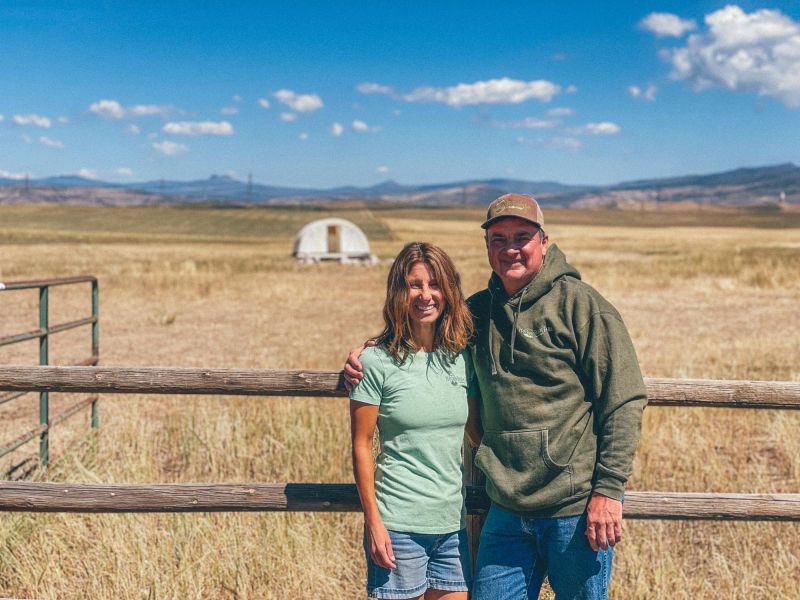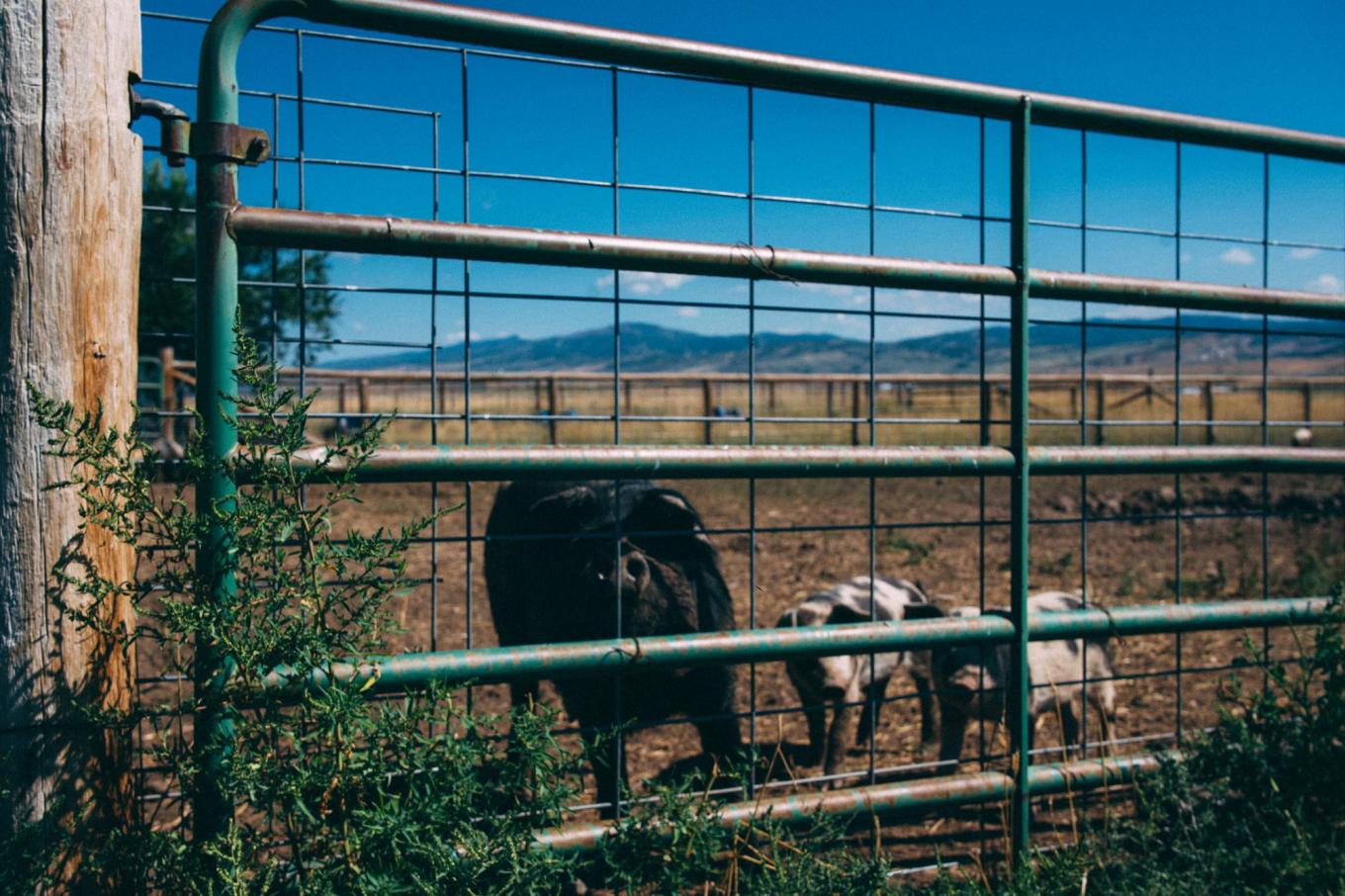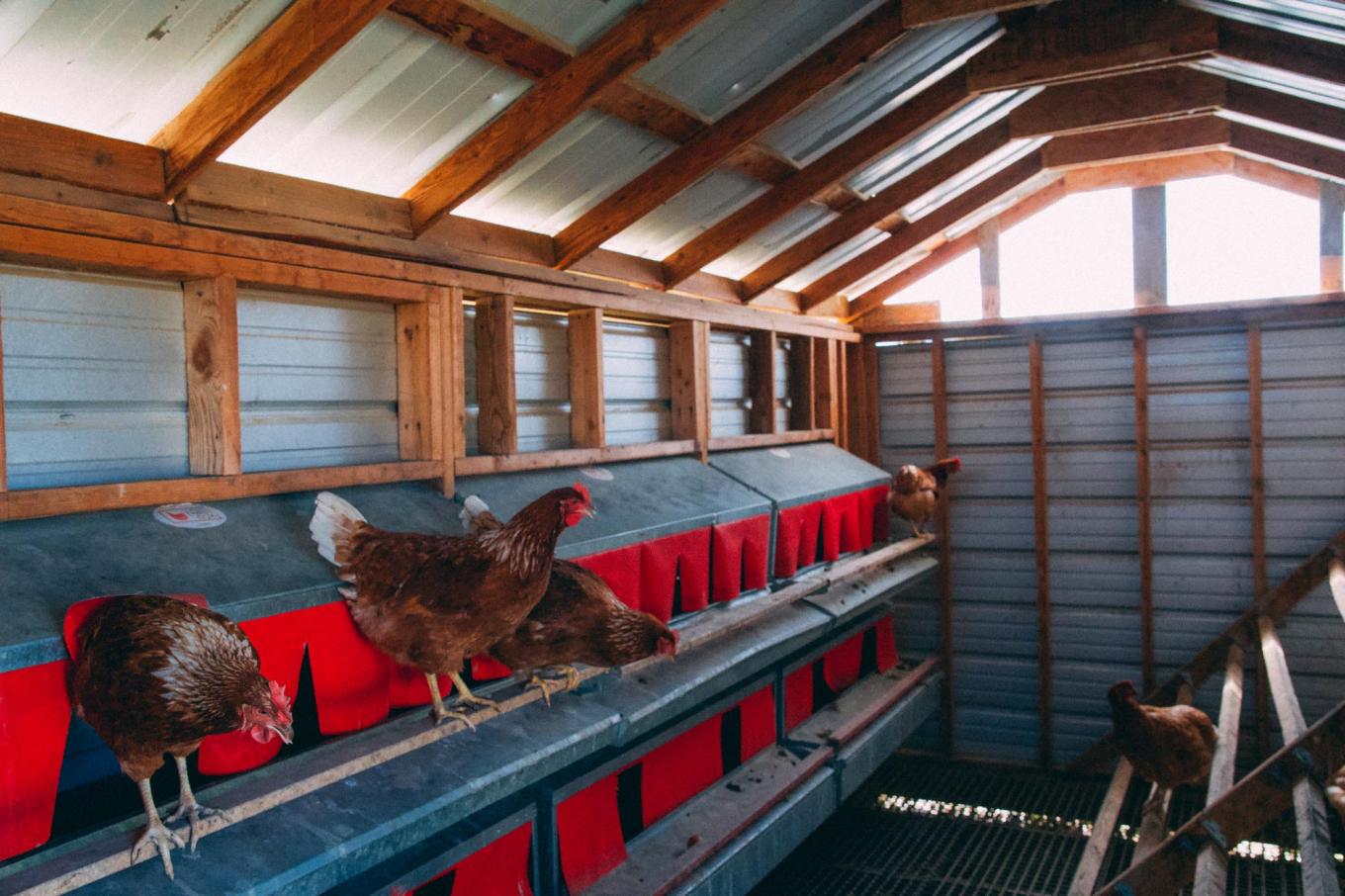
The Mad Agriculture Journal
Slowing the Flow
Published on
November 14, 2022
Written by
Kristina Tober
Photos by
Kristina Tober
Just 24 miles northwest of Steamboat Ski Resort is the small town of Hayden, Colorado. Just as snow is a prized commodity in any ski town, it’s also the lifeblood of a ranching community that’s always been dry. With less than 18 inches of annual precipitation a year, Hayden’s arid terrain is barely more lush than a desert (where 10 or less inches a year is the norm).
Lack of water presents a challenge to any rancher in Hayden, but its scarcity is exponentially formidable if you own a dryland farm where every drop of water must be hauled in.
So how do you manage the scarcity? Slow it down.
CHANGING MINDSETS & PRACTICES
When Colby and Michelle Townsend purchased their 40-acre farm in 1996, the dirt lay bare without a single fencepost or blade of grass. After 50 years of farming wheat, the top soil had eroded to expose alkaline hard pan clay, making it impossible to grow anything without massive amounts of fertilizers, herbicides and irrigated water.
While the family had relied on income from the local feed store they owned in Steamboat for 23 years, in 2018 they decided to sell it to make a living off their land. “For years, I was the one selling fertilizers and herbicides,” explained Colby. “I assumed our dryland farm couldn’t grow without these inputs, that we were cursed with this legacy of poor soil and arid climate.”
After three failed wheat rotations, Colby decided there had to be a better way. He began exploring regenerative practices as a way to restore the soil on their farm and conserve what little water nature provided. Experimenting with their front yard, he top-coated grass seed with alfalfa pellets as a cover to the soil. He quickly saw that the grass responded much better than with conventional fertilizer, planting the idea that an investment in organic over conventional methods could possibly pay off in the long run.
“I realized that chemical inputs are a lot like a drug habit,” he reflected. “The ground built up a tolerance and needed more each year to get anything to grow. Organic methods, on the other hand delivered positive compounding results – every little bit I did seemed to make the soil quality better in subsequent years.”
PUT A CHICKEN ON IT
Introducing chickens to the farm was an easy decision – it was a scalable operation, the birds had plenty of acreage to graze and lay, and their high-nitrogen manure could help to restore the soil. Using mobile chicken wagons, the Townsends rotate their flock of broilers (chickens raised for meat) and layers (chickens who produce eggs), giving them access to fresh grass, weeds, seeds, grasshoppers and more. In the process, the birds are leaving behind a rich top dressing of nutrients that’s feeding the soil and creating a literal checkerboard of vibrant green grass in their path.
As with any transition to regenerative practices, there have been plenty of learnings and failures along the way. “So much of this process is about changing your mindset and having persistence – moving away from prescriptions to learning how to read and man-age the land,” explained Colby.

In the process, Colby has gleaned valuable “wisdom from the land” – starting with learning to see a weed as a weed only if it’s damaging to his goals. “Weeds have a purpose for healing the ground,” he explains. He referenced a story heard on one of the many podcasts he’s listened to over the years. “These Musk thistle plants were growing over nine feet – something no one had ever seen before. Turns out they were growing on a dump site full of battery acid. The thistles were neutralizing the acid and healing the soil.”
Another valuable insight? Understanding what your soil needs. “From our time running the feed store, I was always told that nitrogen was the key to growing,” he explains. “What I’ve found with our soil, carbon is the key.”
Colby introduced pine mulch for litter bedding his flock, realizing that the carbon it provides balances the high nitrogen from the chicken manure and together works like a slow-release fertilizer. The acidity in the mulch also helps to balance the high alkaline soil across his farm, resulting in a more balanced growing environment. Over the years, their pastures have seen huge gains in water retention and soil quality from mulching the fields with the manure/pine mulch mix.
SLOW THE FLOW
In addition to building soil health, the Townsends have literally moved earth to improve water infiltration and slow the water down. After reading Brad Lancaster’s Rainwater Harvesting for Drylands and Beyond, Colby realized he had to find a way to trap the close to 14 million gallons of water that fell on their property from rain and snow.
They sealed existing ponds to more tightly hold water and built tiers of earth berms to slow water runoff on the sloping acreage. “Between the improved soil and water flow management, we’re trying to create more sponge-like environments that will capture and hold the little water that Mother Nature provides.”
ENGINEERING SOLUTIONS
Making the transition to new practices doesn’t just require a new mindset – it also takes creativity, innovation and a whole lot of repurposing. Walking across their operation, there are literally dozens of examples where Colby has fashioned structures from used agricultural and industrial materials. Whether it’s the chicken tractor fashioned from the bottom half of a plastic water tank purchased at auction, or the steel paneled garden beds that still bear graffiti from train cars, Colby and Michelle are always looking for solutions in unexpected places.
“My grandfather always said that the lazy man created everything,” comments Colby. “I’m always looking for ways to get the animals and nature to do the work for me.”
This winter, he’ll move his egg layers from the barn to a series of greenhouses. In the center of each hooped structure, he’s built a vermicompost bin where he hopes to breed earthworms that will feed the chickens and produce the rich compost needed on their land to expand to other perennial crops.
“The nest boxes will sit on top and the manure will drop into the bed to feed the worms and the soil. As the chickens peck at the water line mounted to the bed, the earthworms will surface with the noise. It’s a totally hypothetical plan, but I’m hopeful it works.”

CREATING A MARKET
Raising chickens to improve the soil is great, but you’ve got to make money while you’re at it. Licensed as Hayden Fresh Farm, the Townsends sell their eggs and meat from both their poultry and small drove of grazing Mangalitsa pigs (hearty, free-roaming pigs whose pork can trade at 10 to 20 times over factory-farmed hogs) via direct deliveries, farmers markets, wholesale to local restaurants, and through the local retail outlet run by the Yampa Valley Community Ag Alliance (CAA).
“We’re fortunate to live in a valley where our consumer appreciates the benefits of local food and local systems,” he explains. But it’s not without its challenges. On top of Michelle spending nearly 30 percent of her time on marketing, they (like many small farms) struggle with matching supply to demand. “Protein farmers are constantly adjusting on the fly. We sell the premium cuts very quickly and are left with other parts that don’t sell as fast. I always preach to people to buy more roasts and ground meat to help us farmers out.”
As co-chair of the CAA board, Colby is also steering the organization’s vision to create a “back the truck up” model in the Yampa Valley. The goal is to create a food hub or diversified retail space where local producers can sell their goods in one spot – and provide consumers with a broader, year-round option of local goods.
REAPING THE REWARDS
As proven during COVID, Mother Nature responds quickly when you give her a chance. Within three years of starting their transition to regenerative practices, the Townsends were able to pull two incomes from the farm. While many of the benefits were expected (improved water infiltration, reduced erosion, healthier soil), they’ve seen plenty of surprises.
From brilliant orange yolks to prize marbled pork, they’re proving that feeding animals a diverse diet not only makes them healthier and cheaper to produce (no vaccinations or worming required), but results in better tasting, higher quality, nutrient-dense food. Fields that once lay desertified and desolate can sustain life and even produce enough hay that they can now introduce sheep or cattle to graze their land. Most importantly, they’ve seen how efforts to produce a higher-quality food product can simultaneously sustain and heal the land on which it’s raised – and provide a living in the process.
When asked about their “path to enlightenment,” Colby is equally honest about their failures and enthused by their successes. “We’re surrounded here by commercial ag with heavy tillage and open-range grazing. I hope at some point soon to use our farm as an example to teach others the benefits of regenerative practices, and to show them how growing things naturally can be more profitable.”
And when it comes to the consumer, how do we educate them on the value of naturally-raised food? Concludes Colby, “Farmer activist Joel Salatin talks about how, in America in the last 35 years, we’ve gone from spending 18% of house-hold income on food and 9% on health care to the reverse today. You can choose how you want to treat your body and whether you spend your money upfront or down the road.”

